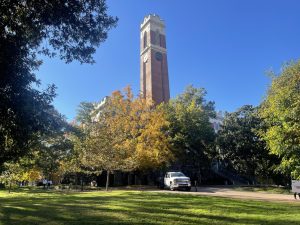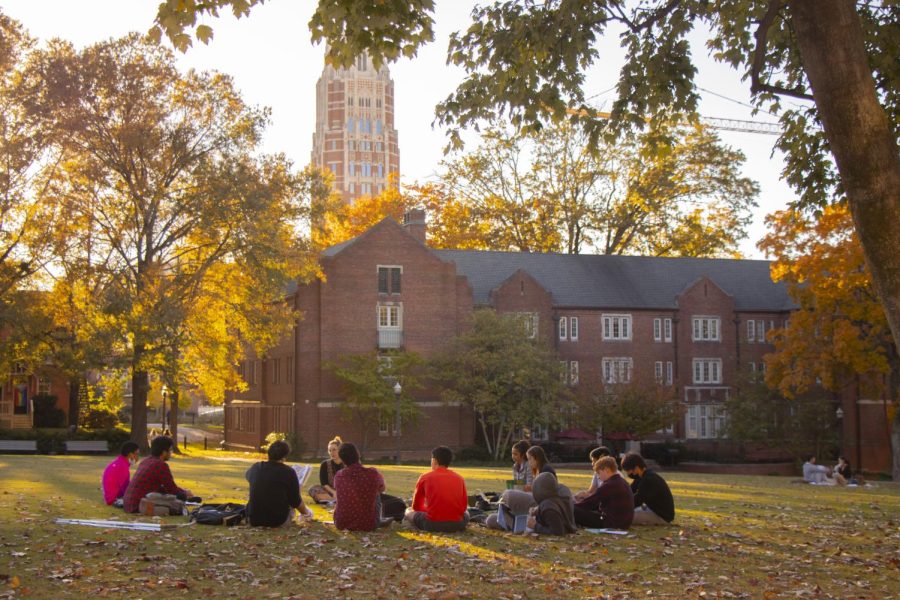As a special education major, I was so excited to finally enter the classroom for an observation practicum this semester. The best part? The classrooms I’m observing are in-person, allowing me to actually witness the behavioral interventions I need to learn for my future in teaching.
In-person observation was a huge win this year as I hadn’t expected to be able to do so during a pandemic. Metro Nashville Public Schools (MNPS) began its return to in-person learning in February, and by March I was able to attend in-person classes.
Of course, classrooms do look different from what we think of as “normal.” However, MNPS classrooms do look more normal than our in-person classrooms at Vanderbilt. Because of updated classroom COVID-19 procedures, students and faculty in K-12 schools are to remain three feet apart from one another instead of the previous six feet after studies have shown that the difference in infection rates between six and three feet of social distancing, with mask mandates in place, is not significant.
So, as long as everyone is masked, materials aren’t shared and there’s limited classroom-switching for students, three is the new six for K-12 classrooms. And, while some are riled up about this sudden change, I’m okay with it.
Before attending my first day, I intently researched the middle school I was going to be observing. Located in south Nashville, the school is in a low-income and high-crime area, and a large portion of the students qualify for free or reduced lunch. Because of its location in a lower-income area, this school has less funding and therefore fewer resources than schools in higher income areas. And fewer resources means there’s less classroom space. In fact, the school that I’m observing permanently uses portable classrooms or “portables” for many of the middle school classrooms, which I happen to be in.
These portables, while sizable, could never fit all 20 to 25 of the students in my classes if they still had to adhere to six feet of distancing. Even for schools with plenty of in-building classrooms, having enough space for all students who opt in to be in-person and six feet apart from one another is not very reasonable.
To put it into perspective, if a student is standing in the middle of a bubble with a six foot radius, they would need approximately 113 square feet of space dedicated solely to themselves. If a middle school class has 19 students (which is around the TN state average size), the students would need 2,147 square feet for their classroom alone. And that’s not counting teachers and other faculty that may need to enter the classroom.
Some say this problem might be fixed if students switch off days in-person and days learning virtually. And this does work to some extent, like the hybrid model at Vanderbilt. However, particularly in low-income schools where space and access to technology needed for virtual learning are major issues, more students need to be in-person than ever. For many low-income students, their only meal of the day comes from school and they haven’t been getting that meal during virtual learning. Some low-income students with disabilities are not getting all of their services because they aren’t attending school in-person and aren’t able to access them elsewhere. For younger low-income students and students with disabilities, parents have not been able to provide home care for their children who are learning virtually while they are at work.
The list goes on. The vast majority of students across socioeconomic stati need to be in school to learn their best, and in the cases of students from low-income areas, they may need to be in school to live their best as well.
For many low-income schools with too many students and not enough space to comply with six foot distancing procedures, the three foot distancing change for classrooms was crucial. It’s allowing students like those in my very own classrooms to get meals, special education services and to learn. And this isn’t exclusive to low-income schools. While it may be easier for higher-income schools to fit more students in-person or to have some students remain virtual, students across the nation are falling behind with online learning and will greatly benefit from more in-person instructional time thanks to the decreased distancing guidelines.
I’m not asking all students and faculty to return in-person and sit three feet away from one another. By all means, students and faculty whose lives are at risk by leaving their homes or who might be putting their family members at risk by attending school should be able to continue attending school virtually. The new three foot guideline will bring many students who want and need to be in-person back but doesn’t need to bring everyone back in-person just yet.
While it is completely reasonable to ask students to distance as much as possible, following the three foot distancing guideline has been statistically proven to be just as safe as six feet of distance. Of course, other procedures must be in place such as the sanitizing and limited sharing of materials, one-way hallways and teachers rotating classrooms as opposed to students to limit contact. But, if all other guidelines are followed (which they should have been even with six feet of distance), three feet is okay. And learning at a distance of three feet from their peers, for many students, is much more beneficial than learning through a screen.






















